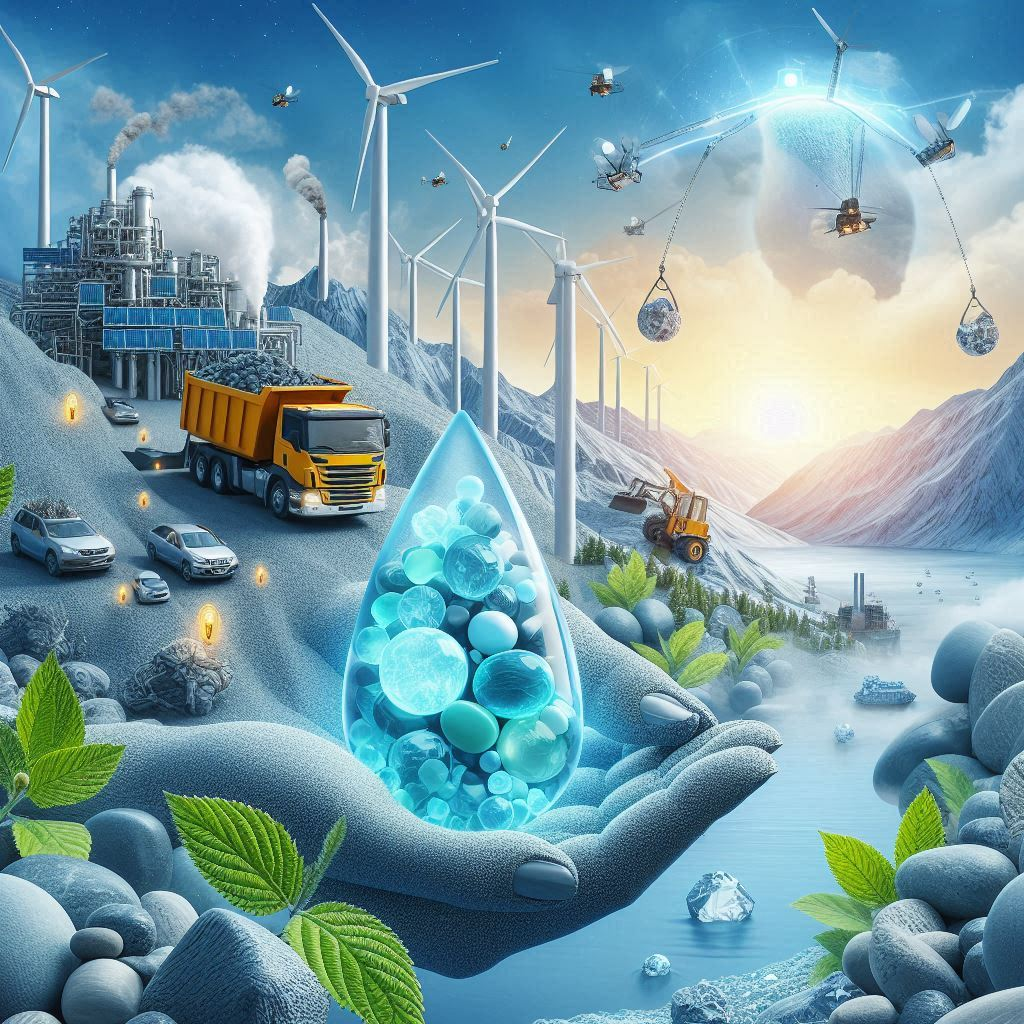The market for vital minerals used in clean energy tech, such as solar panels, wind turbines, and electric cars, witnessed a notable release of pressure in 2023 as supply exceeded demand.
The market for vital minerals used in clean energy technologies, such as solar panels, wind turbines, and electric cars, witnessed a notable release of pressure in 2023 as supply exceeded demand. To reach global energy and climate targets, however, significant extra expenditures are needed, according to a recent assessment from the International Energy Agency (IEA).
The Global Critical Minerals Outlook 2024, released today, updates the IEA’s inaugural market review from last year and provides new medium- and long-term projections for the supply and demand of key energy transition minerals like lithium, copper, nickel, cobalt, graphite, and rare earth elements.
Following two years of dramatic increases, the prices of these critical minerals plummeted in 2023, reverting to pre-pandemic levels. Battery materials experienced the most significant decreases, with lithium prices falling by 75% and prices for cobalt, nickel, and graphite dropping between 30% and 45%. This led to a 14% reduction in battery prices. Despite robust demand growth, these price declines were largely due to a substantial increase in global supply, which helped offset the sharp price rises of 2021 and 2022.
While lower mineral prices have benefited consumers and improved affordability, they have also slowed new investments. In 2023, investment in critical minerals mining grew by 10%, and exploration spending increased by 15%—a healthy rate but slower than in 2022.
The IEA’s Outlook warns that the well-supplied market of today might not be indicative of the future. Demand for critical minerals is projected to grow strongly across all IEA scenarios, driven by the deployment of clean energy technologies. The current market size for key energy transition minerals is expected to more than double, reaching $770 billion by 2040 in a pathway to net-zero emissions by mid-century.
A detailed project-by-project analysis reveals that announced projects will meet only 70% of copper and 50% of lithium requirements by 2035, assuming countries achieve their national climate goals. While markets for other minerals appear more balanced, this depends on projects proceeding as scheduled. However, the geographic concentration of supply remains high, with China projected to maintain a dominant position in refining and processing.
“Secure and sustainable access to critical minerals is essential for smooth and affordable clean energy transitions. The world’s appetite for technologies such as solar panels, electric cars, and batteries is growing fast—but we cannot satisfy it without reliable and expanding supplies of critical minerals,” said IEA Executive Director Fatih Birol.
“The recent critical mineral investment boom has been encouraging, and the world is in a better position now than it was a few years ago, when we first flagged this issue in our landmark 2021 report. But this new IEA analysis highlights that there is still much to do to ensure resilient and diversified supply.”
The latest Outlook includes a pioneering risk assessment for selected energy transition minerals, examining supply risks, geopolitical risks, barriers to responding to supply disruptions, and exposure to environmental, social, and governance (ESG) and climate risks.
Lithium and copper are most vulnerable to supply and volume risks, while graphite, cobalt, rare earths, and nickel face substantial geopolitical risks. Specifically, the project pipeline for graphite shows that available supply outside the dominant player meets only 10% of the requirements for 2030, making diversification goals challenging. Most minerals are also exposed to high environmental risks.
Efforts to recycle, innovate, and encourage behavioral change are crucial to mitigating potential supply strains. The report estimates that $800 billion in mining investment is required between now and 2040 to align with a 1.5°C scenario. Without strong recycling and reuse uptake, mining capital requirements would need to be one-third higher.
The industry is progressing in areas like worker safety, gender balance, community investment, and using renewable energy for mineral production. However, there is significant room for improvement in reducing waste generation, greenhouse gas emissions, and water consumption.
The Outlook is complemented by an updated version of the IEA’s Critical Minerals Data Explorer, an interactive online tool for exploring the latest projections. These initiatives are part of the Agency’s expanding work on critical minerals, as requested by governments. Recently, the IEA hosted a Critical Minerals and Clean Energy Summit at its Paris headquarters and launched a new voluntary Critical Minerals Security Programme at the IEA Ministerial Meeting in February 2024.
